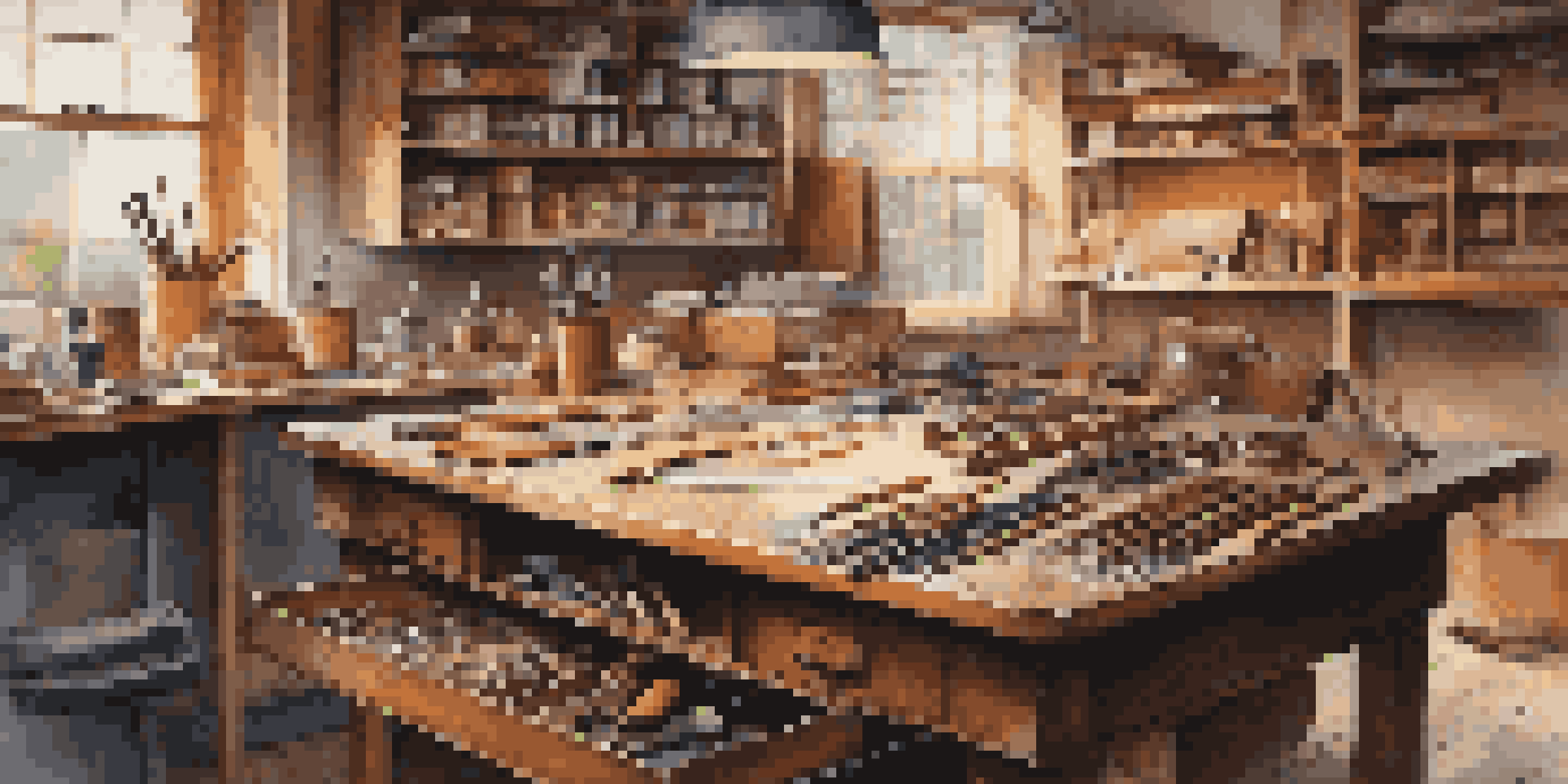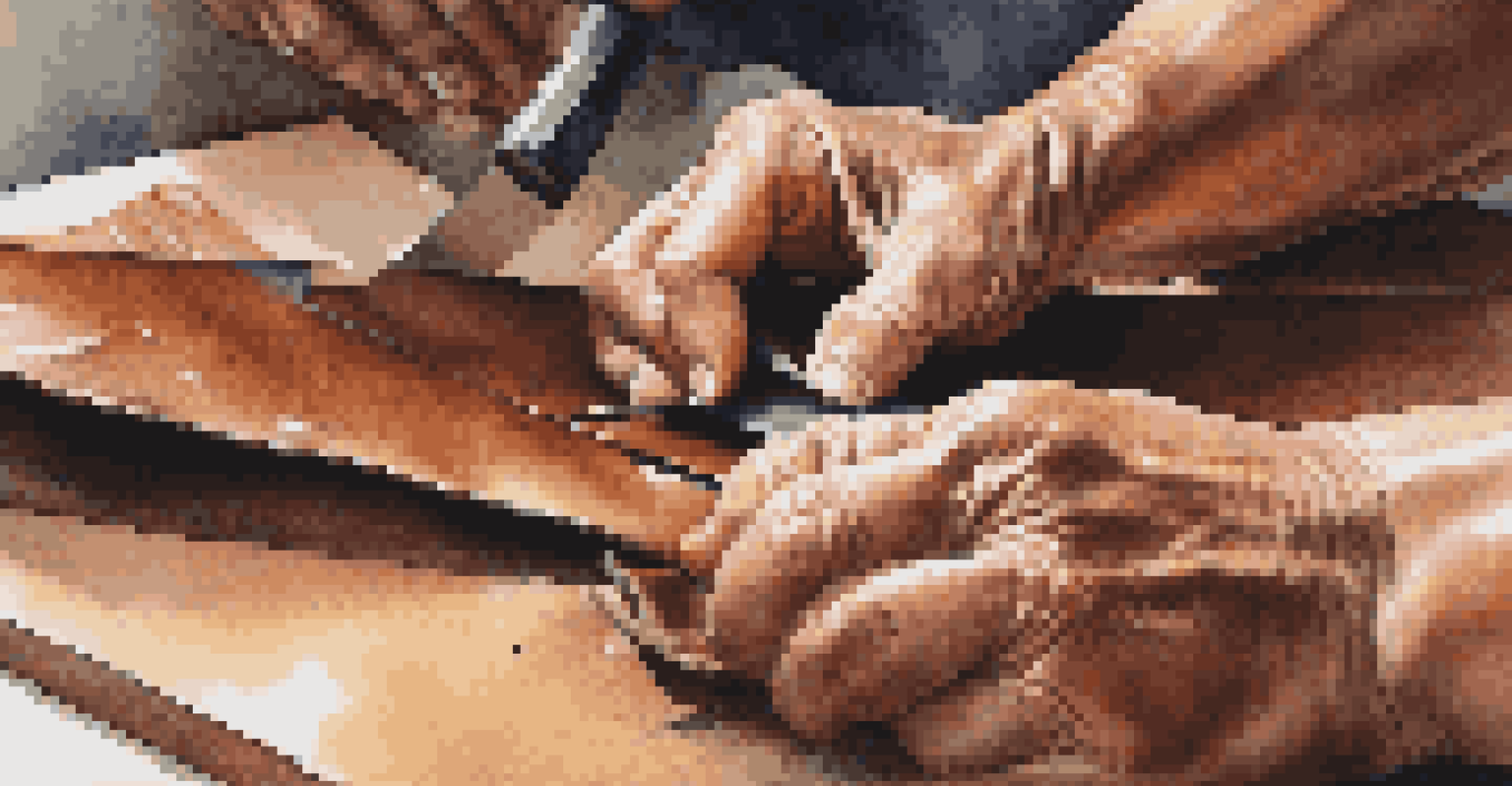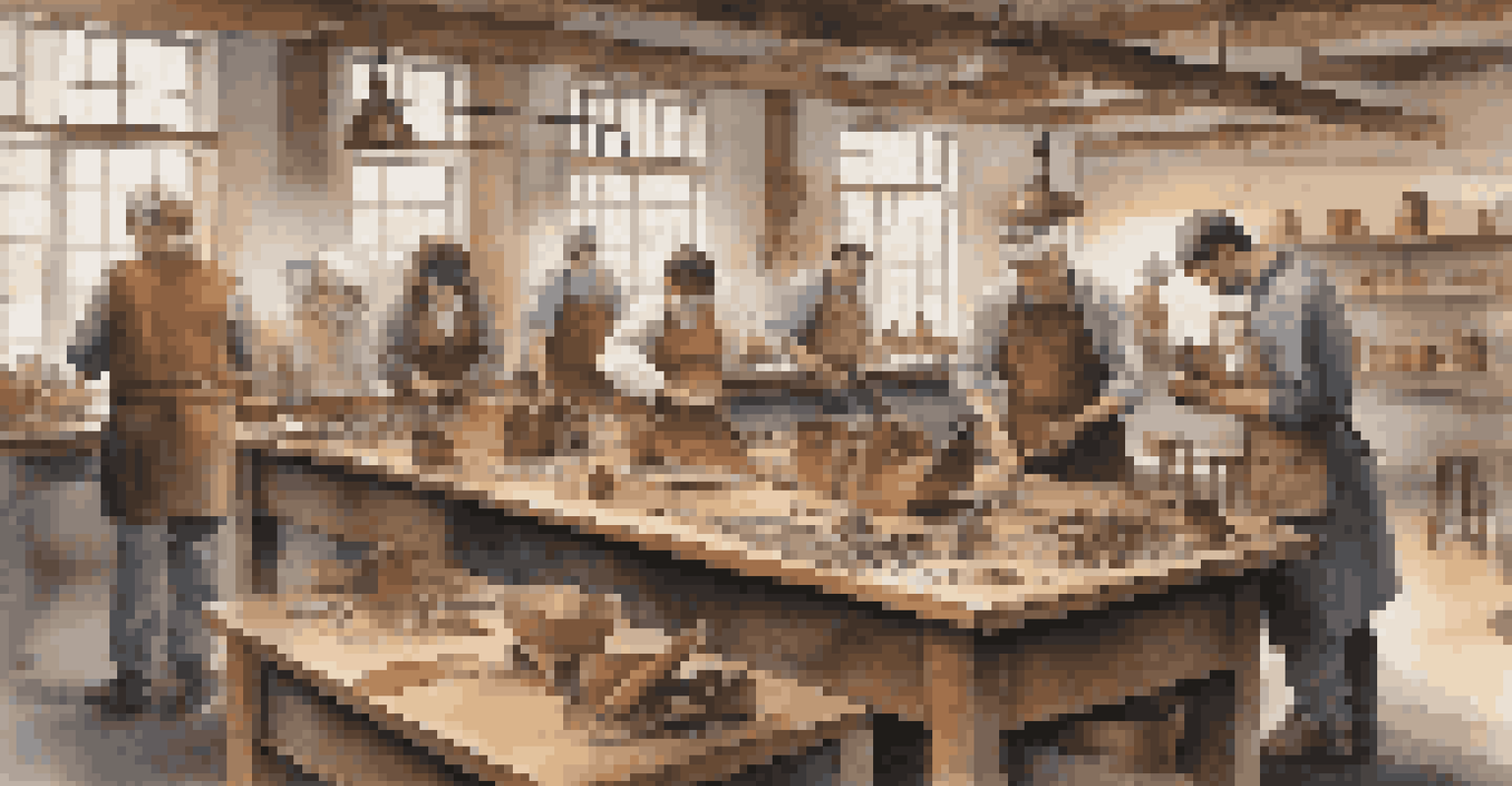The Importance of Safety in Leather Crafting: Best Practices

Understanding the Risks in Leather Crafting
Leather crafting is an enjoyable and rewarding hobby, but it comes with its risks. From sharp tools to chemicals, understanding these potential hazards is crucial for a safe crafting experience. Recognizing the dangers can help you prepare and take necessary precautions.
Safety isn't just a slogan, it's a way of life.
For instance, cutting leather requires a sharp knife, which can easily cause cuts if not handled properly. Additionally, many adhesives and dyes used in leather crafting contain solvents that can be harmful if inhaled or if they come into contact with skin. By being aware of these risks, you can mitigate them effectively.
Ultimately, knowledge is power. By educating yourself on the potential dangers, you not only protect yourself but also create a safer environment for those around you, ensuring that your crafting sessions remain enjoyable and productive.
Essential Personal Protective Equipment (PPE)
One of the best ways to ensure safety while leather crafting is to use the right personal protective equipment (PPE). Basic items like safety goggles, gloves, and masks can greatly reduce the risk of injury or exposure to harmful substances. These items are your first line of defense.

For example, safety goggles protect your eyes from dust and debris when cutting or sanding leather. Similarly, wearing gloves can shield your hands from sharp tools and harsh chemicals. A simple dust mask can also help prevent inhalation of harmful fumes when working with adhesives or dyes.
Recognize Risks in Leather Crafting
Understanding the potential hazards, such as sharp tools and harmful chemicals, is essential for a safe crafting experience.
Investing in quality PPE not only promotes safety but also boosts your confidence while crafting. With the right gear, you can focus on your creative process without constantly worrying about potential hazards.
Organizing Your Workspace for Safety
A well-organized workspace can significantly enhance safety during leather crafting. Keeping your tools and materials neatly stored reduces the chances of accidents and mishaps. It’s essential to create a designated area that is free from clutter and distractions.
An ounce of prevention is worth a pound of cure.
Consider using toolboxes or organizers to store your blades, needles, and other sharp instruments. Labeling containers can also help you quickly locate items without rummaging through everything, minimizing the risk of injury. An organized space allows you to work efficiently and safely.
Moreover, good lighting is vital. A brightly lit workspace not only helps you see your materials clearly but also prevents eye strain. By organizing your workspace thoughtfully, you set the stage for a productive and safe crafting session.
Proper Tool Handling Techniques
Handling tools correctly is essential for maintaining safety in leather crafting. Always cut away from your body and keep your fingers clear of the blade’s path. Practicing proper techniques not only prevents accidents but also improves your overall crafting skills.
For instance, when using a rotary cutter, ensure that you’re using a cutting mat to protect both your tools and surfaces. Additionally, never leave sharp tools lying around; always return them to their designated storage after use. These small habits can prevent potential injuries.
Use Proper Personal Protective Gear
Wearing safety goggles, gloves, and masks can significantly reduce the risk of injury and exposure to harmful substances while crafting.
Furthermore, consider taking a moment to familiarize yourself with each tool before starting your project. Understanding how each tool works and its intended use minimizes the risk of accidents and enhances your crafting experience.
Safe Use of Chemicals in Leather Crafting
Many leather crafters use adhesives, dyes, and finishes that contain chemicals. While these products can elevate your projects, it’s crucial to use them safely to avoid health risks. Always read labels and follow manufacturer guidelines when using any chemical products.
For example, ensure you’re working in a well-ventilated area when using adhesives or dyes. If the product has strong fumes, wearing a mask can protect you from inhaling harmful substances. Additionally, consider using gloves to prevent skin contact with these chemicals.
By being mindful of chemical safety, you can enjoy the benefits of these products without compromising your health. Always prioritize safety by being informed and taking necessary precautions.
Emergency Preparedness and First Aid
Accidents can happen, even with the best safety practices in place. Being prepared for emergencies can make a significant difference in how you handle these situations. Have a basic first-aid kit readily available in your workspace to address minor injuries promptly.
For example, if you accidentally cut yourself, having band-aids and antiseptic on hand can prevent infections and help with recovery. Additionally, knowing how to treat burns or allergic reactions to chemicals will empower you to act quickly and efficiently.
Stay Prepared for Emergencies
Having a basic first-aid kit and knowing emergency procedures ensures you can handle accidents effectively and maintain peace of mind while crafting.
It’s also a good idea to familiarize yourself with emergency numbers and procedures. In case of a more serious accident, knowing who to call or where to go can save precious time. Being prepared ensures that you can craft with peace of mind, knowing you're ready for any situation.
Educating Yourself on Leather Crafting Safety
Continuous learning is vital to maintaining a safe crafting environment. Whether it’s through online resources, workshops, or community classes, educating yourself on the latest safety practices in leather crafting can enhance your skills and knowledge. The more informed you are, the safer your crafting experience will be.
Joining forums or social media groups dedicated to leather crafting can also provide valuable insights. Engaging with fellow crafters allows you to share experiences and learn from others' mistakes. This sense of community fosters a culture of safety and support.

Additionally, consider keeping up with any new safety regulations regarding crafting materials and tools. By staying informed, you not only protect yourself but also contribute to a safer crafting community.